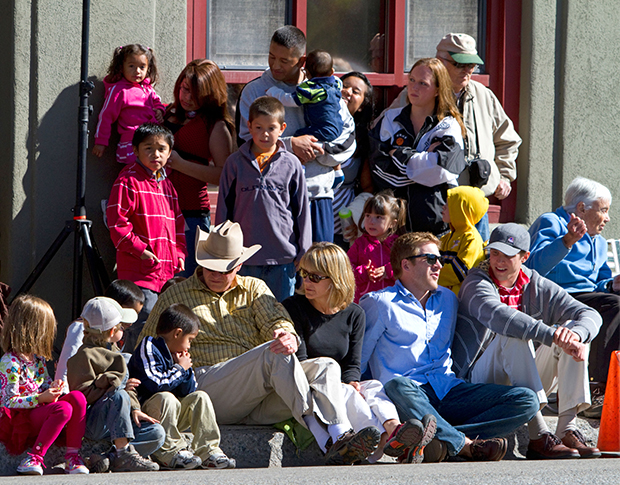
Beginning in the 1960s—and accelerating over the last two decades—changes in marriage, divorce, cohabitation, and nonmarital childbearing have transformed family life in the United States. The family continues to serve a primary role in raising children and caring for elderly relatives. But new family patterns and increased instability are creating complex family and economic ties that often span multiple households, according to a new Population Reference Bureau (PRB) report, “Understanding the Dynamics of Family Change in the United States.”
Unstable living arrangements and complex family relationships create challenges for families and policymakers alike as more children are at risk of growing up poor and more adults reach old age without a spouse or ties to an adult child to provide care, reports Alicia VanOrman, PRB research associate and lead author.
Compared to the 1950s, men and women today have more socially acceptable choices about how, when, and with whom to form intimate relationships and in what context to have children. No longer do marriage, co-residence, and parenting always go together, nor is marriage necessarily viewed as a life-long commitment.
The prevalence of marriage has continued to decline in the United States. In 2014, about half of all U.S. adults were currently married, compared with nearly three-quarters in 1960. Multiple factors are driving this decline, including young adults delaying marriage to older ages, more couples cohabiting before or instead of marrying, more couples divorcing, and fewer adults remarrying following a divorce or the death of a spouse.
Cohabitation rather than marriage is now the setting of a majority of first live-in romantic relationships. Yet, cohabiting unions tend to be short and unstable. Only about two in five cohabiting couples now marry within three years, down from three in five in the early 1990s. Previously married people are not remarrying as quickly or as often as in the past; rather they are cohabiting. In nearly half (47 percent) of cohabiting couples in 2014, at least one member had been previously married.
The share of children born to unmarried parents has doubled since the 1980s, reaching 43 percent in 2009-2013 from 21 percent in 1980-1984. Births to cohabiting couples (whose relationships tend to be less stable than those of married couples) now represent 25 percent of all U.S. births and account for nearly all of the recent increase in nonmarital births.
While divorce has declined slightly among people in their 20s and 30s, it has increased dramatically among those ages 50 and older. In 2010, close to half of Americans ages 50 and older who had ever married had also divorced or separated. Family demographers point to a variety of reasons such as higher expectations for marital relationships, the instability of remarriages, and higher women’s earnings that make divorce more economically feasible.
However, the number of same-sex married couples has more than doubled from an estimated 230,000 in 2013 to 486,000 by late 2015; the U.S. Supreme Court legalized same-sex marriage in all states in June 2015.
A growing share of children experience unstable living arrangements—moving from families with two biological parents to families with a single parent, with a cohabiting parent, or with a stepparent—as more parents split up and form relationships with new partners.
In 2009, two in five children did not live with both biological parents in a nuclear or traditional family household. Instability has made family ties more complex, making it harder for parents to invest time and money in their children—especially those who live in different households. And surveys show that as adults, children feel less obligation to care for elderly stepparents or fathers with whom they did not reside during childhood.
Contemporary couples tell interviewers that they view financial security as a prerequisite for marriage. But the decline in family-supporting jobs, particularly for those without a college education, along with the rise in home prices and mounting student debt, all pose barriers to marriage.
However, marriage is associated with many benefits for children and adults, including higher income, better health, and longer life expectancy. Indeed, research shows that children raised outside of stable, two-biological-parent families are more likely to be poor and to receive lower-quality parenting—which can hinder their healthy development and future life chances.
The retreat from marriage and increased instability have been more heavily concentrated among disadvantaged groups—including racial/ethnic minorities and those with lower levels of education. About half of children with noncollege-educated parents are in complex families (a single-parent family, a cohabiting or married stepparent family, or a family with half-siblings or stepsiblings) compared with one in five children with a college-educated parent.
Unless policymakers, researchers, and others address the causes and consequences of family change, progress in reducing social and economic inequalities among children may be undermined and existing disparities across racial/ethnic groups may widen, the authors argue.